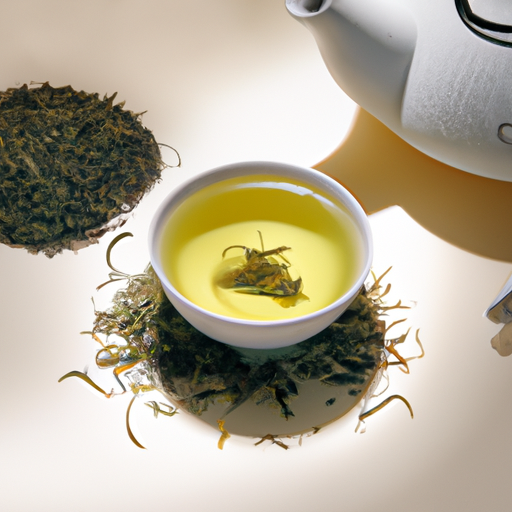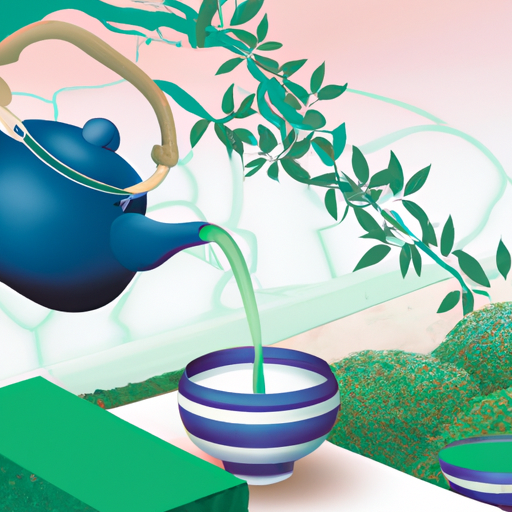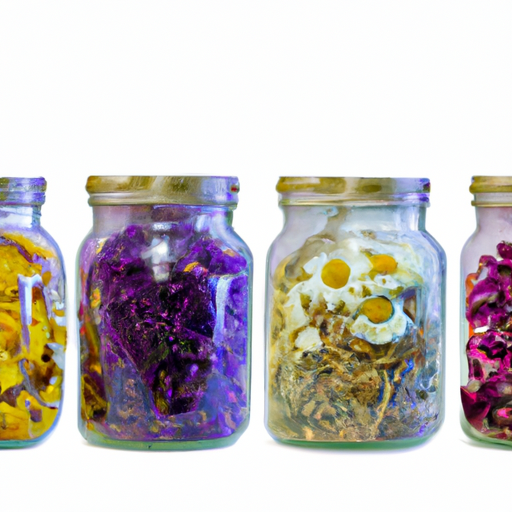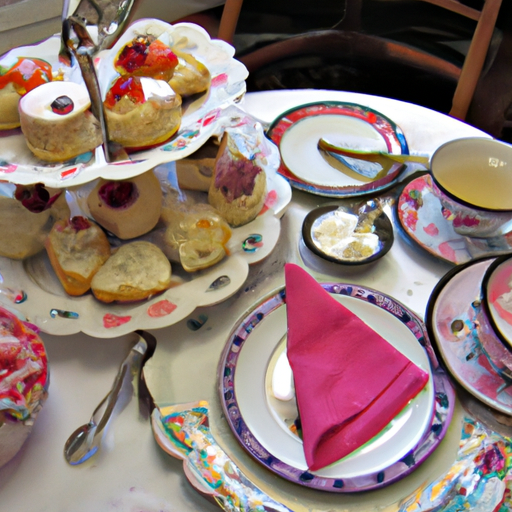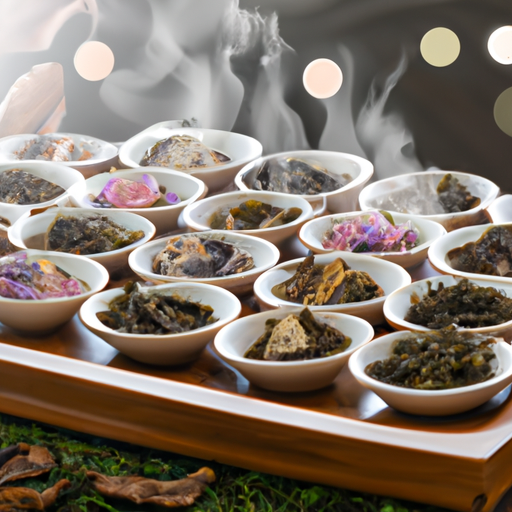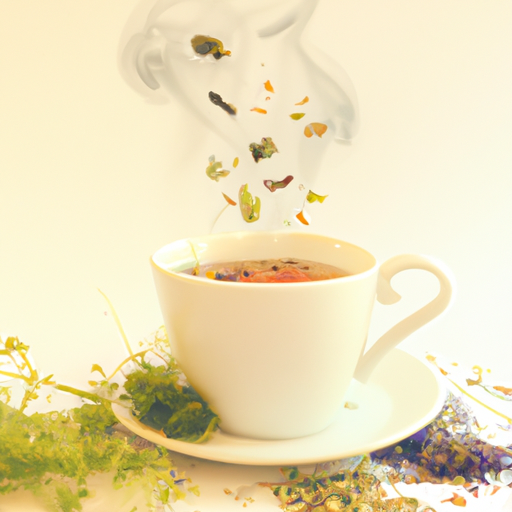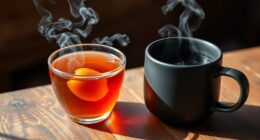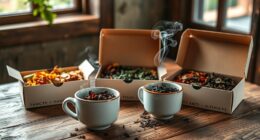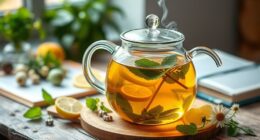Grab a cup of green tea and join me as we explore the world of flavors and fragrances.
Green tea, a diverse and beloved category of tea, offers a myriad of options to tantalize your taste buds. From the enchanting landscapes of China to the delicate traditions of Japan, the best green teas are a testament to the artistry and expertise of tea makers worldwide.
Like a symphony of flavors, each type of green tea brings its own unique melody to the palate. With Chinese teas like Dragonwell and Gunpowder, you’ll experience a rich and captivating taste that lingers on your tongue.
Meanwhile, the Japanese teas of Matcha, Gyokuro, and Sencha will transport you to a realm of delicacy and refinement, like a gentle breeze in a serene garden.
But how do you choose the best green tea? Fear not, for I am here to guide you. With my expert recommendations and detailed insights, you’ll be able to navigate the vast world of green teas with confidence.
So, join me as we uncover the secrets behind the processing techniques, flavor profiles, and renowned brands that make green tea a true delight. Let’s embark on this aromatic adventure together!
Key Takeaways
- The best green tea does not have a bitter taste.
- Factors that can result in a poor cup of green tea include low-quality tea leaves, incorrect brewing temperatures, and steeping for too long.
- Green tea flavors vary based on processing, rolling, terroir, and cultivar.
- The best green teas are from China and Japan, but other countries also produce green teas.
Types of Green Tea
I know that there are many different types of green tea, each with its own unique flavors and characteristics. Green tea is a diverse category of tea, and the type of green tea is determined by how the Camellia sinensis plant is processed.
Green tea flavors can vary based on factors such as processing, rolling, terroir, and cultivar. Different brewing techniques can also bring out the best flavors in green tea and avoid any bitterness. It’s recommended to use filtered water and follow recommended steeping times and temperatures to enhance the flavor of green tea.
Additionally, green tea is known for its numerous health benefits. It’s full of antioxidants and contains less caffeine than coffee. Regular consumption of green tea has been associated with improved brain function, weight loss, and a reduced risk of heart disease and cancer.
Processing and Flavor Profiles
When exploring different types of green tea, it’s fascinating to learn about the various processing methods and the unique flavor profiles they produce. Factors affecting the flavor of green tea include the quality of the leaves, the terroir, and the specific processing techniques employed. The significance of processing techniques in green tea flavor can’t be overstated. Here are some key processing methods and their flavor profiles:
-
Steaming: This method is used primarily in Japan and results in a bright green liquor with a fresh, vegetal flavor.
-
Pan-firing: Commonly used in China, this method produces teas with a slightly smoky, nutty flavor.
-
Roasting: Roasting green tea leaves imparts a toasty, caramel-like flavor to the brew.
-
Rolling: Rolling the leaves creates a more delicate, nuanced flavor profile.
-
Scenting: Scenting green tea with flowers, such as jasmine, adds a delicate floral aroma.
Understanding the different processing techniques allows tea enthusiasts to appreciate the diverse and complex flavors found in green tea.
Famous Chinese Green Teas
Renowned for their distinct flavor profiles and exquisite craftsmanship, Chinese green teas offer a delightful range of options for tea connoisseurs to explore. Among the famous Chinese green teas, Dragonwell (Long Jing) stands out with its sweet and lightly toasted flavor. This well-known tea is a favorite among many for its smooth and refreshing taste.
Another popular Chinese green tea is Gunpowder, which is rolled into small pellets and produces a refreshing brew. It has a slightly smoky flavor that is loved by many tea enthusiasts.
Chinese green teas are not only delicious but also packed with health benefits. They are rich in antioxidants, which help to boost the immune system and protect against various diseases. Additionally, green tea has been linked to weight loss, improved brain function, and reduced risk of heart disease. So, not only can you enjoy the unique flavors of Chinese green teas, but you can also reap the many health benefits they offer.
Famous Japanese Green Teas
Among the famous Japanese green teas, Matcha is a highly prized powdered tea with a vibrant green color and a smooth, sweet flavor. When it comes to cultivation techniques, Matcha stands out as it’s made from shade-grown tea leaves. This method enhances the chlorophyll content, resulting in its vibrant color and unique taste.
Here are four key features of Matcha that make it a favorite among tea enthusiasts:
-
Ceremonial Grade: The highest quality Matcha, known as ceremonial grade, is made from the youngest and most tender tea leaves, hand-picked and stone-ground to a fine powder.
-
Antioxidant Powerhouse: Matcha is packed with antioxidants, including catechins, which are known for their health benefits, such as boosting metabolism and promoting heart health.
-
Calming Energy: Matcha contains L-theanine, an amino acid that promotes relaxation and mental clarity, providing a calm and focused energy without the jitters often associated with caffeine.
-
Versatility: Matcha can be enjoyed in traditional tea ceremonies or used as an ingredient in various culinary creations, such as lattes, smoothies, and desserts.
With its unique cultivation techniques and numerous health benefits, Matcha continues to be a favorite among tea drinkers worldwide.
Frequently Asked Questions
How is green tea different from other types of tea?
Green tea is different from other types of tea because it is made from the leaves of the Camellia sinensis plant that undergo minimal oxidation. This process helps preserve the tea’s natural antioxidants, resulting in numerous health benefits and a distinct flavor profile.
Are there any green teas that are naturally caffeine-free?
Sure, there are naturally caffeine-free green teas available. While traditional green tea contains some caffeine, decaffeinated versions offer the same health benefits without the stimulating effects. Enjoy the soothing qualities and antioxidant-rich properties of decaf green tea.
What are some common myths or misconceptions about green tea?
Common misconceptions about green tea include that it is always bitter, that it has high caffeine content, and that it can cause dehydration. However, green tea can actually be smooth and refreshing, has less caffeine than coffee, and can contribute to skin health with its antioxidants.
Can green tea help with weight loss?
Green tea can aid in weight loss due to its metabolism-boosting properties. Scientific evidence suggests that it can increase fat oxidation and improve insulin sensitivity. However, it is important to note that green tea alone is not a magic solution and should be combined with a healthy diet and exercise for effective weight management.
Are there any specific brewing techniques or tools that are recommended for green tea?
When brewing green tea, it is important to use filtered water and follow recommended steeping times and temperatures. Additionally, using a kyusu (Japanese teapot) or a gaiwan (Chinese lidded bowl) can enhance the brewing process and bring out the flavors of the tea.
Conclusion
In conclusion, green tea offers a delightful array of flavors and health benefits. From the unique flavors of Chinese green teas like Dragonwell and Gunpowder, to the delicate and high-quality Japanese green teas like Matcha, Gyokuro, and Sencha, there’s something for every tea lover to enjoy.
It’s important to brew green tea correctly, using filtered water and following recommended steeping times and temperatures to enhance the flavor and avoid bitterness.
And here’s an interesting statistic: Did you know that green tea contains approximately 25-35 milligrams of caffeine per cup, compared to the 95 milligrams found in an average cup of coffee? So, not only can you savor the delicious taste of green tea, but you can also enjoy a lower caffeine intake.

